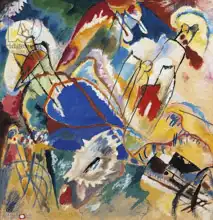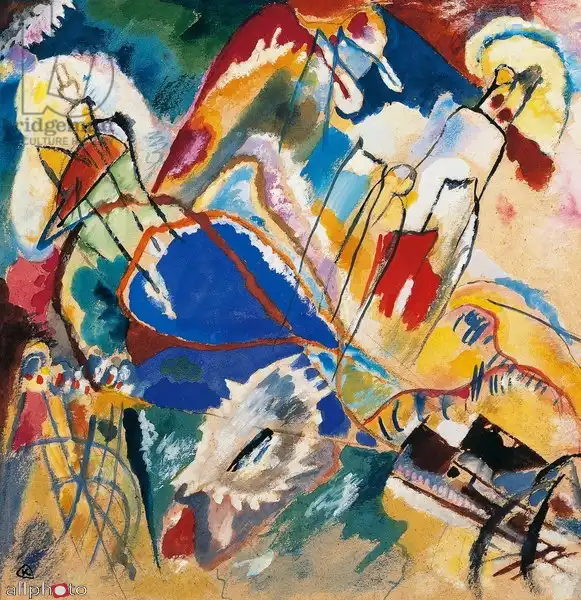About this finishing
Print. The image is printed on the top quality 10-ink HP Z9PS printer on HP matte 270 g / m2 paper. You can choose any size to an accuracy of 1 cm. A margin of 5 cm around the image is added to the size of the motif.


You can find a detailed description about our finishings
here.
Improvisation no. 30
Date:
1913This painting is an abstract painting that consists of different coloured surfaces and lines creating a dynamic composition. Fragments of figures and objects can be distinguished between organic and geometric shapes. Bright colours such as red, blue, yellow and white dominate here with elements of black and purple. On closer inspection, some of the shapes may resemble animals or human figures, but they are interpreted more loosely, making the painting reflect a distinctly non-conformist artistic direction.
This description was created by artificial intelligence, please be indulgent.
Kandinsky painted picture Improvisation no. 30 in 1913. Prevailing color of this fine art print is blue and its shape is square. This image is printed on demand - you can choose material, size and finishing.
Wassily Kandinsky (1866-1944). Russian painter and art theorist. One of the most famous painters of the 20th century. He gained fame through his abstract paintings. After the First World War, he moved to Germany, where he worked until 1933, when he fled the Nazis to France. He lived in France until his death. Kandinsky worked a long way to get to his abstract painting technique (he was fascinated by
symbolism and the psychology of colour). Kandinsky’s most famous works belong to the Bauhaus movement - an artistic movement of the 20s and 30s. It is characterized by sharp, geometric shapes (circles, wedges, triangles, etc.), clear colours and thoughtful treatment of surfaces. Perhaps the most famous work of this era is
Yellow - red - blue (1925).

